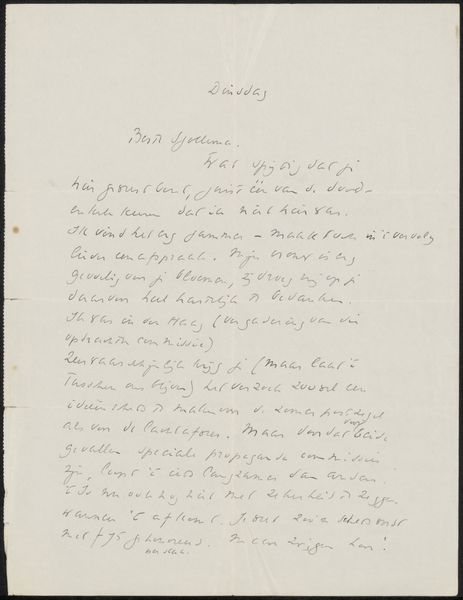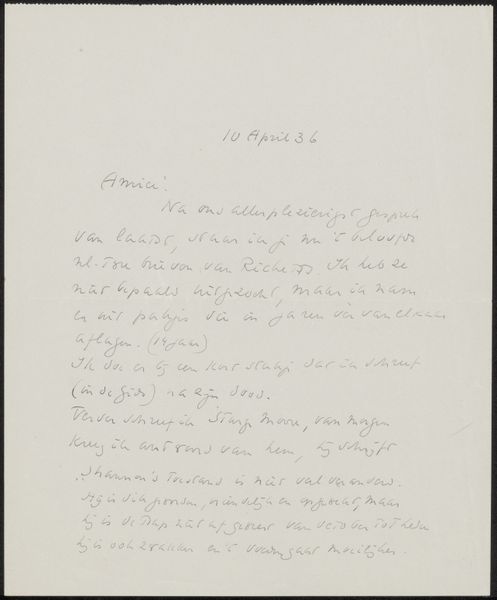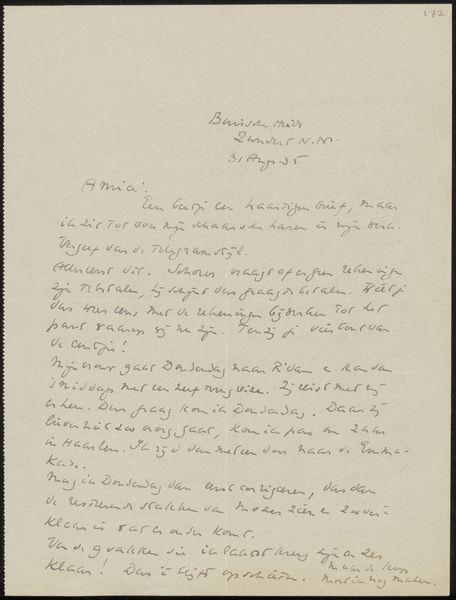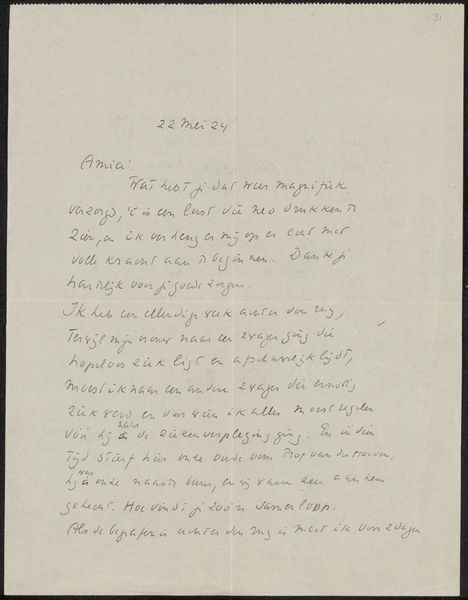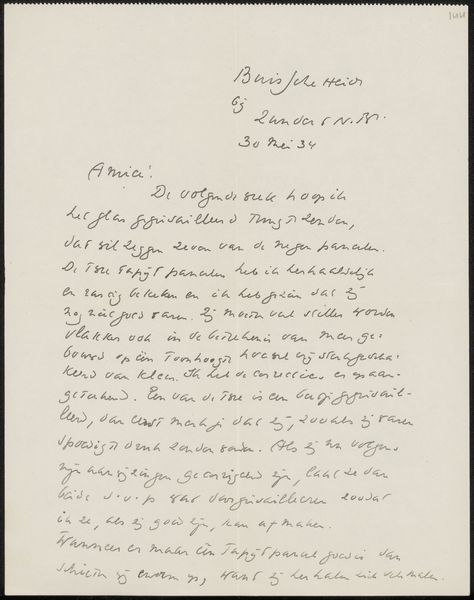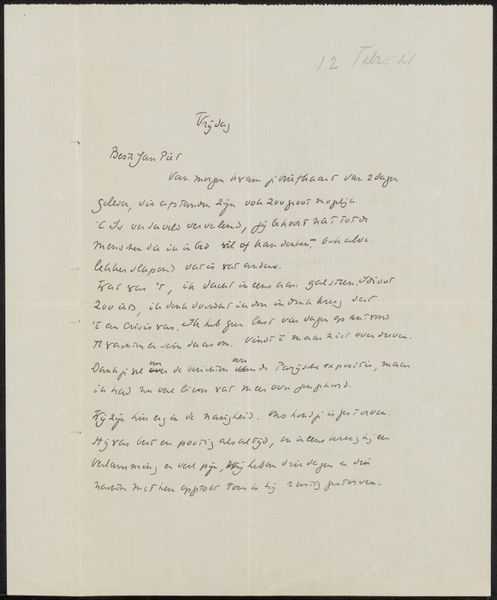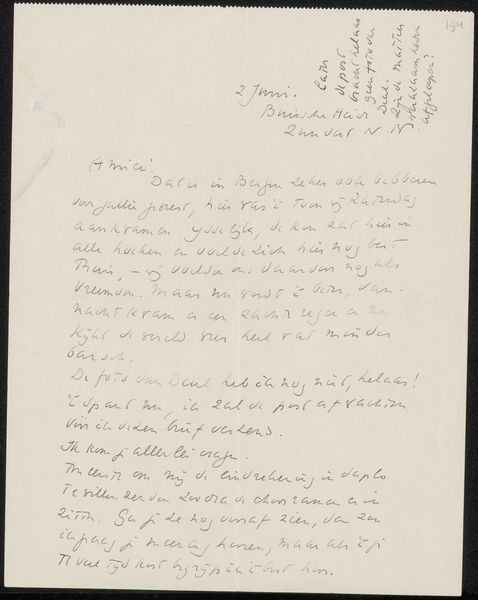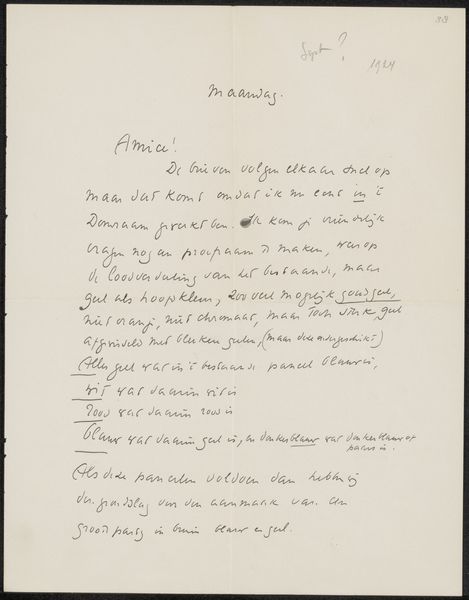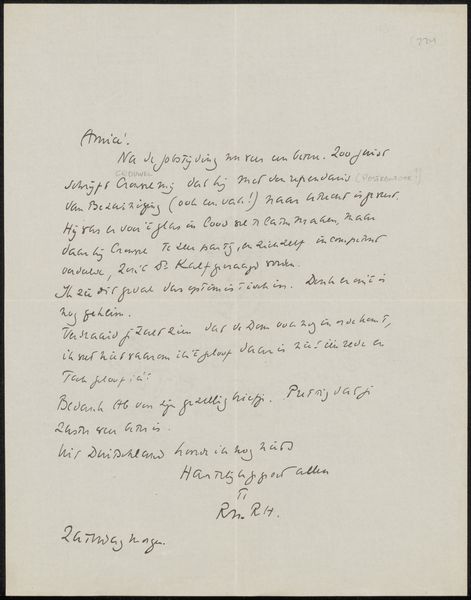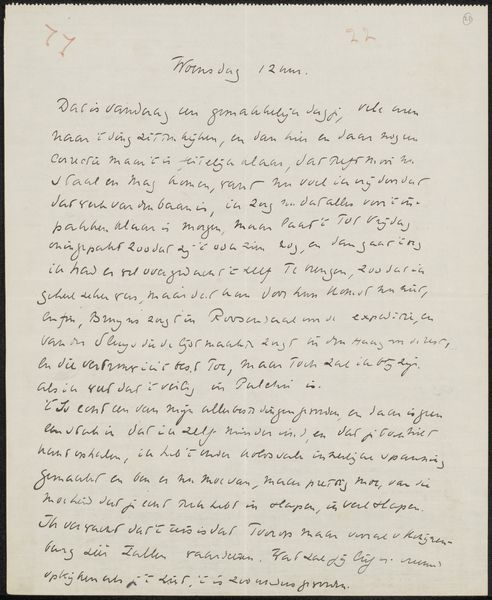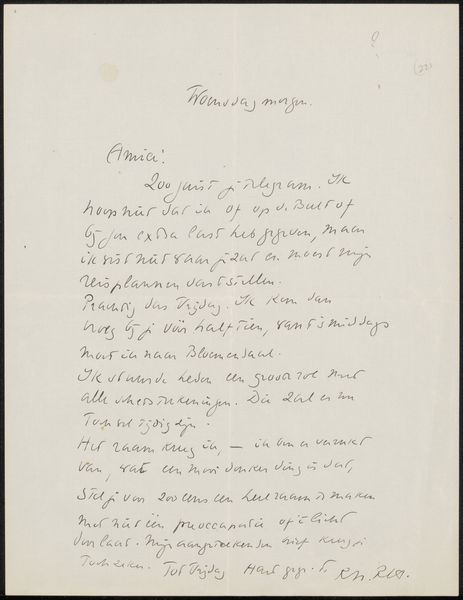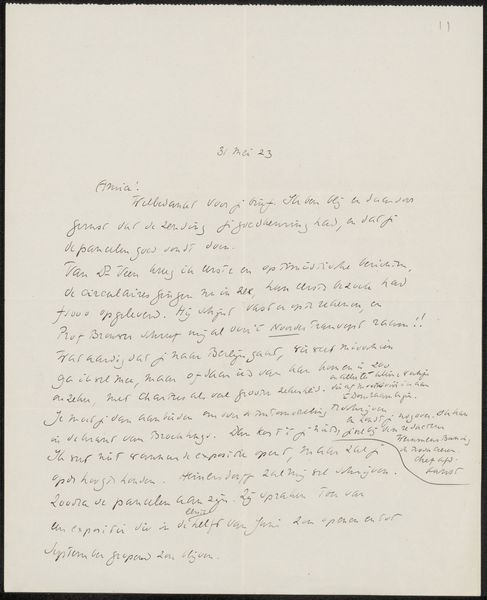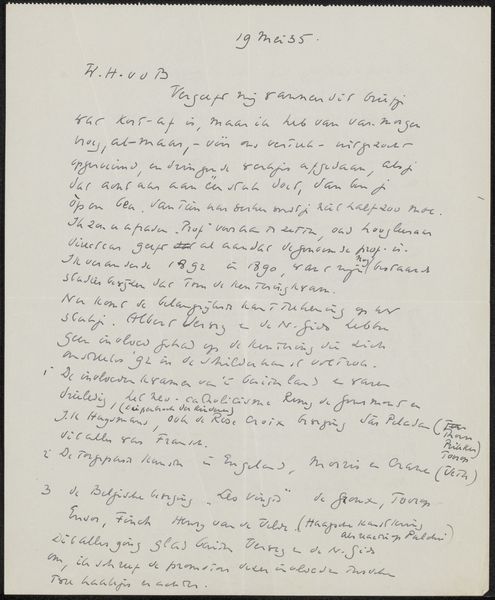
drawing, paper, ink, pen
#
drawing
#
ink paper printed
#
old engraving style
#
hand drawn type
#
paper
#
personal sketchbook
#
ink
#
hand-drawn typeface
#
ink drawing experimentation
#
pen-ink sketch
#
pen work
#
sketchbook drawing
#
pen
#
sketchbook art
#
calligraphy
Copyright: Rijks Museum: Open Domain
Curator: Richard Nicolaüs Roland Holst’s “Brief aan Willem Bogtman,” likely created around 1925, is now held at the Rijksmuseum. The materials are straightforward: pen and ink on paper. What do you make of it? Editor: My first impression is one of intimacy and artistic reflection. It's like stumbling upon a private thought, or perhaps a hurried sketch from a personal journal—the raw emotion behind those hurried ink strokes is undeniable. Curator: The rapid script is key here. Note how Holst seems less concerned with legibility and more focused on the sheer gesture of writing itself. The calligraphic element adds a layer of compositional complexity, wouldn't you agree? Editor: Absolutely. The act of handwriting, of physical inscription, itself carries meaning. Given Holst’s prominent role within social-democratic movements and the Dutch Arts and Crafts movement, one wonders about the significance of handwriting versus printing, maybe its implied value judgments in an era defined by rapid industrialization. Who was Bogtman and what type of work did he do? What would a handwritten letter mean to these men? Curator: We know that Bogtman was a fellow artist involved in decorative arts. In purely formal terms, consider how the variations in line thickness create an almost musical rhythm across the page. He seems more interested in spatial relationships than strict linguistic meaning, an exploration into graphic abstraction almost. Editor: I am also intrigued by the intersection of language and image. This letter becomes a palimpsest. Are we really to accept it is just a means of corresponding when it serves as an extension of Holst’s visual, aesthetic self. What are we to learn of this piece when removed of its origin. Who can even read what he is writing and therefore receive it as he meant? Is the intent to really speak at all? Curator: Ultimately, this piece encapsulates the beauty that exists between pure intention and its imperfect execution. Holst offers us a glimpse of artistic processing in real-time, something immediate, direct and visceral. Editor: A beautiful paradox—a deeply personal correspondence turned into a public artwork, forever prompting dialogue across history. It makes one reflect on the artist’s role and the shifting interpretations through generations.
Comments
No comments
Be the first to comment and join the conversation on the ultimate creative platform.
